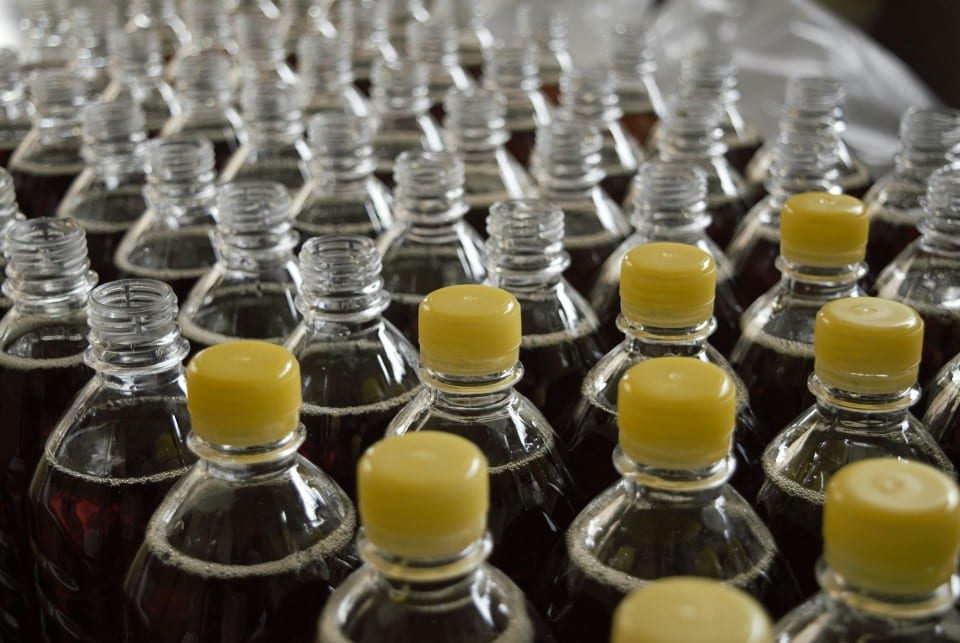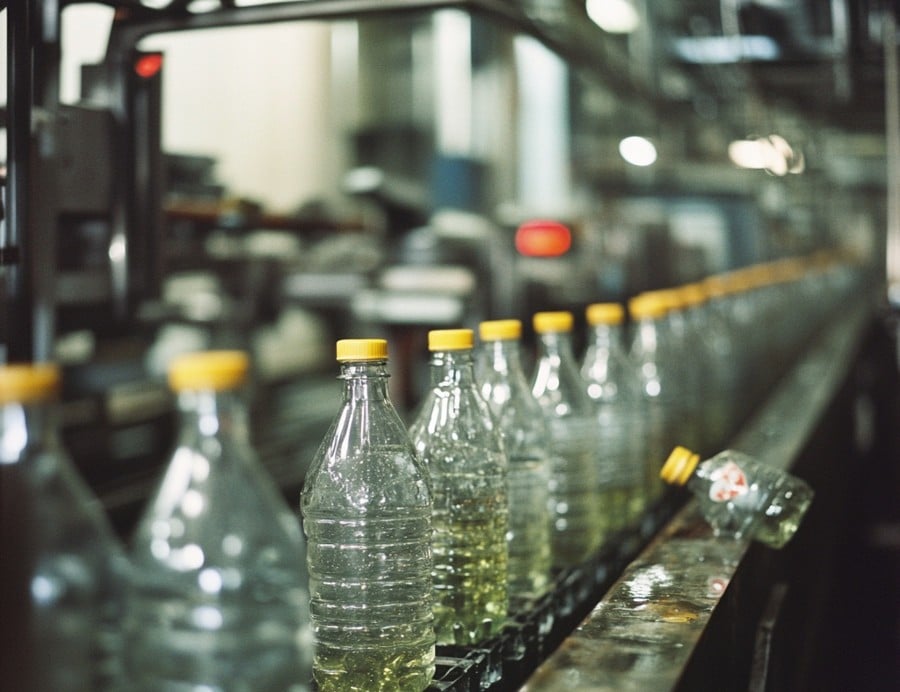Typically, when you think of the food industry, you might think of the people who make and serve your food. But what about what goes on behind the scenes to improve customer experiences? With the addition of AI in the food and beverage industry, the role of employees is changing along with customer experiences.
AI is making waves in the food and beverage industry by automating repetitive tasks, improving food and employee safety, and making sure quality is up to standards. With AI, some of the pressure on staff can be alleviated, making work easier.
In this post, we’ll take a look at how AI can be used in the food and beverage industry so that things run smoother for everyone. We’ll also see how AI-powered platforms like aiOla can make a big difference when it comes to improving workflows.
AI in Food Production
AI is making life easier for employees in the food industry by handling repetitive and physical tasks, leaving them with more time to focus on other things. AI-powered robots can handle things like sorting, packaging, and assembling products so that employees in food manufacturing roles can focus more on complex and rewarding tasks, giving them more space to develop their skills. Today, more than 20% of the food and beverage industry has already adopted AI technologies, with that number set to grow.
Additionally, AI can also help with predictive analytics. With predictive analytics tools, companies can forecast demand and adjust production schedules as needed so that employees aren’t always scrambling to keep up with last-minute changes. Instead, they get a more organized schedule so that work continues to run smoothly. Overall, AI is helping food companies create more balance between hands-on work and smarter decision-making.
AI in Recipe Creation and Culinary Innovation
AI is turning into a partner in the kitchen, assisting chefs in bringing their vision to life quicker and with less trial and error. AI tools can be used to analyze ingredients and suggest adjustments so that chefs can perfect their recipes sooner. Instead of spending hours testing new recipes, they can spend more time exploring new ideas, flavors, and dishes.
Another advantage AI can offer is its ability to offer data-driven suggestions for recipes. By analyzing massive amounts of data through machine learning (ML), AI tools can suggest unexpected flavor combinations that chefs may not have considered, opening the door to unique, innovative dining experiences while still relying on the chef’s creativity and artistry.

AI in Food Personalization and Employee Efficiency
Consumers want more personalized services across the board, and what’s on their plates is no exception. The personalized nutrition market is expected to be worth 16.4 billion dollars by 2025, up from 8.2 billion in 2020. With AI, companies can establish systems that tailor food suggestions to individual preferences. By looking at data like past orders, dietary restrictions, or flavor preferences, AI can make the customer experience more personalized.
Taking it a step further, AI-powered menus can also be a significant game-changer. By adapting in real-time based on customer data and choices, a diner can see more choices that take their requests into account. This is also beneficial for service staff, as it means less back-and-forth or making recommendations or amendments to meals. With AI doing all the heavy lifting, service and kitchen staff can focus on producing high-quality food with a personalized touch.
AI in Food and Beverage for Retail
In the retail world, AI is also making life a lot easier for employees in the food and beverage industry. Smart shelves are an emerging technology that relies on AI to track stock levels and product freshness. With smart shelves, food businesses can more closely monitor inventory and expiration dates, freeing up time for employees by replacing the need to manually take stock or check freshness and improving food safety for their customers.
Another AI-driven technology changing the face of food retail companies is dynamic pricing. AI systems can adjust pricing in real time based on demand, competitors, or stock levels. This way, employees don’t need to manually make price changes throughout the day, allowing them to focus on other more profitable and customer-focused tasks.
AI in Food Supply Chains and Logistics
With AI, workflows can be made easier for employees behind the scenes. AI algorithms can help logistics teams optimize delivery routes and schedules to better manage operations. Rather than manually planning routes, employees can use AI-powered systems to reduce workloads and make sure deliveries are on time.
When it comes to inventory management, stock needs can be looked at based on demand so that these systems reduce overstock, stockouts, and wasted resources. This alleviates a lot of pressure on employees as they won’t need to rely on manual inventory checks, making their jobs more focused and less hectic.
Speech AI in the Food and Beverage Industry
Speech AI, which relies on systems hearing and understanding spoken language, is helping companies streamline workflows and reduce manual tasks. Here are a few ways it’s making a difference:
- Voice-activated ordering: Speech AI can make the ordering process easier by enabling employees to input orders entirely by speaking. This can reduce the chance of error, speed up service, and allow employees more time to interact with the customer
- Customer service: Routine tasks like answering messages or managing reservations can be handled by speech AI, boosting efficiency and job satisfaction since employees can focus on more meaningful work
- Voice feedback systems: Speech AI can help companies collect and analyze vocal customer feedback, allowing for quicker insights that can influence decision-making and less repetitive work for employees
- Internal communication: Voice-activated technologies can help kitchen and service staff communicate between themselves for better coordination, reduced miscommunication, and a smoother workflow during busier hours, leading to a better overall customer experience

AI in Food and Beverage Industry: Success Stories
To better grasp how AI is really making an impact on food businesses, let’s take a look at some real-world examples of how cutting-edge AI technologies are being implemented.
McDonald’s AI Drive-thru Experiment
Fast food giant, McDonald’s, recently tested using AI for a better drive-thru experience with IBM voice-activated technology. The goal was to simplify ordering and speed up operations by ordering by voice without an employee on the other end. While the experiment has now ended with mixed results, McDonald’s continues to be a pioneer in moving the needle on the customer experience and testing new technologies to improve service.
Carrefour Uses AI to Improve Inventory
Supermarket Carrefour is testing new AI technology in its Belgium locations, which is helping the company reduce costs and improve profitability. With Carrefour’s new AI, the technology is helping store employees by notifying them when products reach their expiry date for better food quality assurance, monitoring inventory levels in real-time, predicting demand fluctuations, and analyzing buying behavior trends. This helps the retailer cut down on man-hours and wasted resources.
Streamline Food and Beverage Workflows with aiOla Speech AI
The struggle of many businesses with emerging AI technologies is that systems are often not yet entirely accurate, making them unreliable, as we saw with the McDonald’s drive-thru experiment. That said, speech AI is set to change the way the food and beverage industry operates, and with more reliable options making their way to market, we’ll soon see more voice-activated processes in both customer-facing and internal roles.
aiOla is one of the technologies that provides more accurate voice recognition abilities. With aiOla’s speech AI technology, employees can speak naturally while the system picks up on specific keywords to trigger actions and workflows. aiOla can understand over 100 languages as well as accents, dialects, and jargon in any acoustic environment, making it fit in a busy food service setting.
With aiOla, teams can cut down on inspection time by completing them by voice instead of manually or on paper, making it quicker to report on product freshness. Additionally, aiOla makes it safer to work in any environment since employees can focus on the task at hand while reporting just by speaking.
Looking Ahead: The Future of AI in Food and Beverage
As AI technology continues to mature and become more commonly used, there’s no doubt it will have a significant impact on the food and beverage industry. Technology like voice recognition is only getting more accurate, so it’s only a matter of time before these systems and others replace a lot of the manual operations we’re used to in the food industry. With technologies like aiOla leading the way, the food and beverage industry is on track to become a lot more efficient, improving not only working conditions but also the general customer experience.








